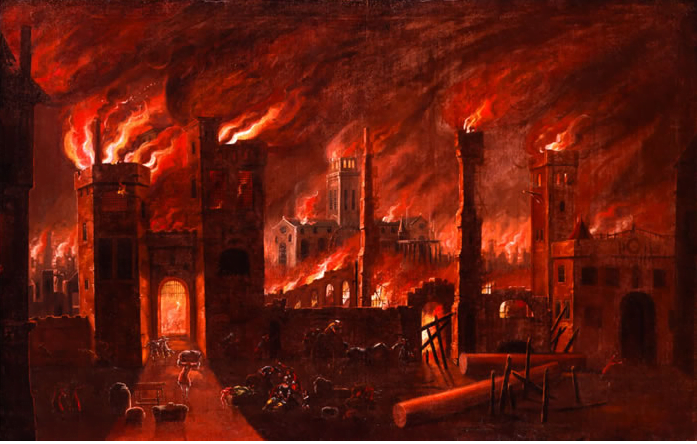The fire started in a baker’s shop on Pudding Lane owned by Thomas Farriner, the king’s baker.
His maid failed to put out the ovens at the end of the day. The heat created by the ovens caused sparks to ignite the wooden home of Farriner. In her panic, the maid tried to climb out of the building but failed - she was one of the few victims of the fire. Once it started, the fire spread quickly. The city was basically made out of wood and with September following on from the summer, the city was very dry.
Would your door closer have slowed or stopped the fire spreading?
In 1665, during the plague, the king, Charles II, had fled London. Many would have liked to have done the same and few criticised the king when he did leave for the countryside. However, in September 1666, he stayed in London and took charge of the operation to save the city. His plan was to create fire-breaks. This required knocking down perfectly good buildings but starving the fire of the wood it needed to burn.In September 1666, a maid failed to put out the ovens at the end of the day... and the Great Fire of London started.The heat created by the fire was so great that the lead roof on the old St Paul’s Cathedral melted. The roof melted and flowed down the street but the actual human casualty rate was remarkably small with possibly only 5 people dying in this fire.
Due to the action taken by King Charles II to prevent fire spreading, the death rate was extremely low compared to the enormity of the fire.Don't risk your life or the life of another with the lack of correct door closers or door controls on Fire Doors.
Rutland are ready to help with expert advice and consulting to ensure you get the right door closer for your situation.Source:
http://www.historic-uk.com/HistoryUK/HistoryofEngland/The-Great-Fire-of-London/www.rutlanduk.co.uk; t: 01246 261 491 e:
support@www.rutlanduk.co.uk;













